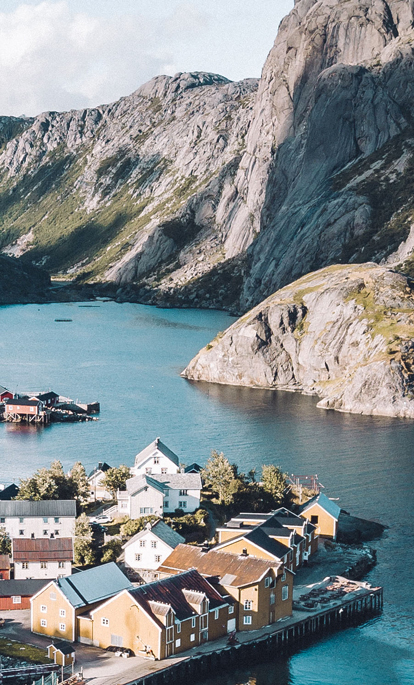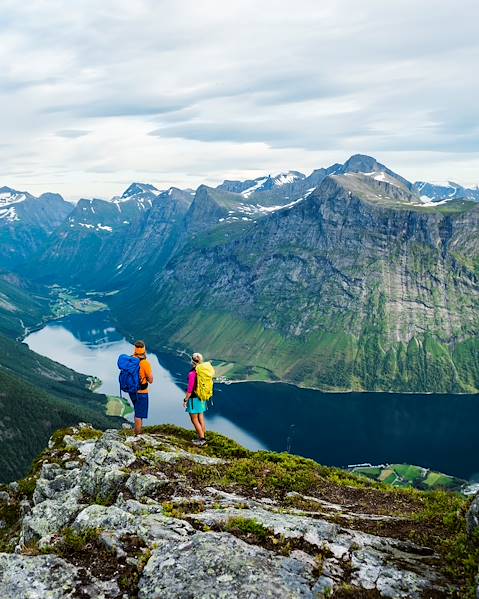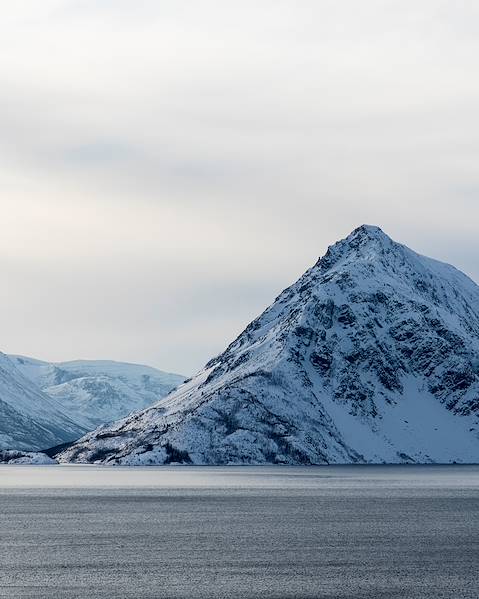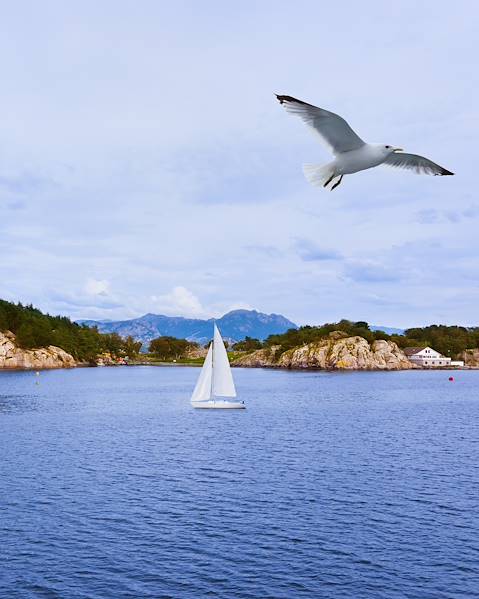Norway boasts incredible natural beauty, from dense forests to majestic fjords and, of course, the infamous Northern Lights. Spend a weekend exploring the dynamic capital of Oslo, or undertake a longer expedition to the Lofoten Islands, with their rugged landscapes and charming fishing villages. Or we can arrange a trip back in time to learn some traditional skills in the Fjords, including cheese-making and Sami crafts. This Scandinavian nation undoubtedly has some of the most dramatic landscapes in the world and a holiday here is perfect for the whole family. To ensure you make the most of this intriguing country, here is our ultimate list of things to know before travelling to Norway.
Climate & Geography
The weather on trips to Norway can vary significantly depending on the season and which region you're visiting. Winters on the coast are milder, while inland there are lower temperatures and a lot of snow. In Northern Norway, the winters are also cold, yet this is undoubtedly the best time to see the enigmatic Northern Lights (especially between October and April). Packing extra layers of clothing is advised, as temperatures can drop to around -7°C during the winter and even lower at higher altitudes. During the northern summers, the sun barely sets and this phenomenon is known as the ‘midnight sun’. The weather all year-round is famously unpredictable and so it’s worth bringing a rain jacket (even in the summer), as Norway can be prone to year-round showers.
There’s a big difference between the north and south of Norway: in the south, the weather is warmer, with beautiful coastlines; while the north is dominated by artic landscapes and colder temperatures. Similarly, the east is home to Oslo and dense wooded areas, while the west is where you’ll find the fjords and mountains.
Food & Drink
Norway is known for its exceptional salmon and as an extension of this, the sushi in Norway is one cuisine not to miss. In fact, the country was actually responsible for introducing the concept of salmon sushi to Japan in the 1980s, so it’s no wonder that it’s a highlight, particularly given the quality of the fish. A more unusual offering is brown cheese, called ‘brunost’. The colour occurs because the whey is boiled down to caramelise the natural sugars and this gives the cheese a sweeter flavour, with a texture similar to cream cheese. Norwegian fish soup (‘fiskesuppe’) is another comforting local delicacy which makes use of the country’s high quality seafood. Herring is also a ubiquitous dish in Norway and you’ll find it in sandwiches, stews, salads and sauces, so you’ll probably want to try it at least once.
Dinner in Norway is usually eaten early, around 5pm, and while most restaurants will serve food later, they often close at about 10pm. The locals tend to fit in a fourth meal in the evening, called ‘kveldsmat’ (evening food), and this late night snack will ensure that you stay satisfied until breakfast the next morning.
Transport
Driving definitely offers the most flexible mode of transport, allowing you to reach more remote areas and see the country’s incredible rural landscapes. However, it’s worth being aware that journeys sometimes involve taking ferries and navigating fjords which can take longer than expected, so be sure to leave enough time for travel. Norway is a very long country, extending 1,089 miles (the greatest length of any European country), meaning it can take a while to cover the distances between regions. This is one of the most important things to know before travelling to Norway and our experts can help to plan your trip accordingly to ensure you fit everything in.
Public transport in Norway is organised by each individual municipality, with their own apps for timetables and tickets, so it’s worth downloading these for the duration of your stay. The public transport is efficient and most trains, buses and ferries are timed so that they join up with one another. In the capital of Oslo, it’s also possible to buy a pass which gives you free access to most museums and free transport.
Safety
Norway is known to be one of the safest countries in the world, with incredibly low crime rates, even in the larger cities. As in any urban area, you should keep an eye on your personal possessions, however it’s unlikely that anything will happen.
Culture
Norway’s law of ‘allemannsretten’ is an ancient custom that was written into the law in 1957. The word translates to ‘freedom of movement’ and allows every person the right to public access. According to the law, it’s permissible to travel across undeveloped private land without the owner’s consent, as well as pitch a tent there provided that it’s 492ft away from buildings, you stay for one night only, and you’re respectful. This law also means that entry to national parks is free. Respect for the land is deeply rooted in Norwegian culture, so make sure you’re not leaving any traces and treat the landscape with care.
Money & Tips
The currency of Norway is Norwegian Krone (NOK). Cash is not widely used in Norway and not accepted in some places, so you can purchase most things with a card. Tipping is viewed as entirely voluntary, however it is usually expected in restaurants and bars if you’re satisfied with the service; as in the UK, the standard tip is 10-20%.
Must-sees
The Northern Lights cannot be missed off a list of must-sees in Norway, as the country is one of the best places to catch a glimpse of the elusive ‘Aurora Borealis’. The dazzling natural phenomenon is most visible in the northern parts of Norway and the best time of the year to see them is between October and April. Our experts can advise on the optimum times and places to view this cosmic performance to give you the best possible chance of seeing them.
Svalbard in the Arctic Circle is another magical location, with some breath-taking views of ice caves and mountains. Here you can take part in winter activities, such as snowmobiling and ice fishing, and you might be lucky enough to catch a glimpse of a polar bear, walrus or arctic fox. Finally, the fjords are equally majestic; Sognefjord is both the largest and deepest in the country, while the UNESCO-listed Geirangerfjord is also a must-see.
Additional Information
Tacos are popular in Norway and many Norwegians participate in a Friday night taco-eating tradition, called ‘Fredagstaco’. This has become a cultural phenomenon, whereby the whole family eats together and shares the Mexican dish.
















